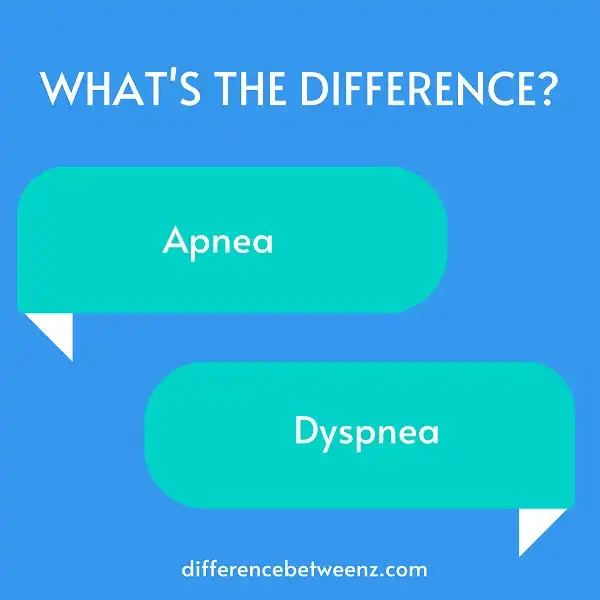Do you know the difference between apnea and dyspnea? Many people don’t, even though the two conditions can be quite different. Apnea is a condition where you stop breathing for brief periods of time, while dyspnea is shortness of breath that is constant or occurs often. In this blog post, we will discuss the differences between apnea and dyspnea in more detail. We will also talk about the treatments available for each condition. So, if you are wondering what the difference is between apnea and dyspnea, keep reading!
What is Apnea?
Apnea is a medical term used to describe a pause in breathing or an absence of breath. This pause can last for a few seconds to several minutes and can occur repeatedly throughout the night. Apnea is commonly associated with obstructive sleep apnea, where the airway becomes blocked during sleep. However, there are also other types of apnea such as central sleep apnea, which is caused by brain signals not properly controlling the breathing muscles, and mixed sleep apnea which is a combination of both obstructive and central factors. Apnea can lead to serious health consequences including high blood pressure, stroke, heart failure, and even death. Treatment options for apnea include lifestyle changes, continuous positive airway pressure (CPAP) therapy, surgery
What is Dyspnea?
Dyspnea, also known as shortness of breath, is a common symptom experienced by those with respiratory and cardiovascular conditions. Dyspnea can range from feeling slightly out of breath to feeling unable to catch one’s breath at all. Dyspnea can be caused by a variety of factors including asthma, COPD, heart failure, pulmonary fibrosis, and pneumonia.
When experiencing dyspnea, it is important to seek medical attention as it can be a sign of underlying health issues that need to be addressed. Treatment for dyspnea may include medication and lifestyle changes such as quitting smoking or exercising regularly. It is important to address dyspnea in order to improve the overall quality of life and prevent further complications.
Differences between Apnea and Dyspnea
Apnea and dyspnea are both related to breathing, but they have distinct differences. Apnea refers to a temporary cessation of breathing, often seen in sleep apnea. Dyspnea, on the other hand, refers to difficulty or discomfort in breathing. While apnea can be measured objectively with medical equipment, dyspnea is more subjective and based on the individual’s perception of their breathlessness. Apnea can also lead to symptoms of dyspnea as the lack of oxygen can cause strain on the body. However, dyspnea can also occur without apnea and may be caused by various factors such as lung diseases or physical exertion.
Conclusion
Although dyspnea is often mistaken for apnea, the two conditions are quite different. Dyspnea is a feeling of breathlessness that can be caused by many factors, while apnea is a specific type of sleep disorder characterized by pauses in breathing. It’s important to understand the differences between these two conditions so you can get the right treatment if you’re experiencing symptoms.


